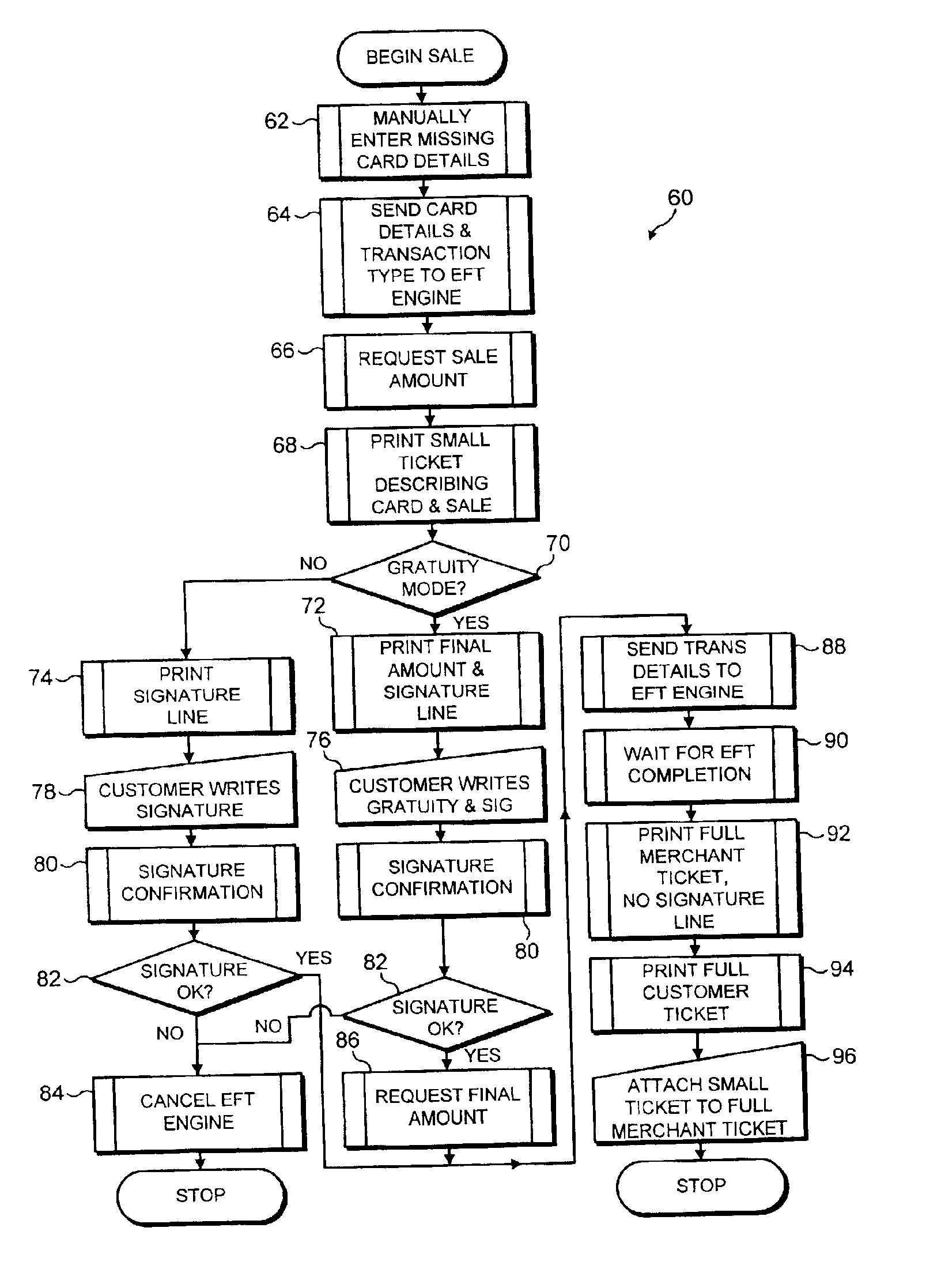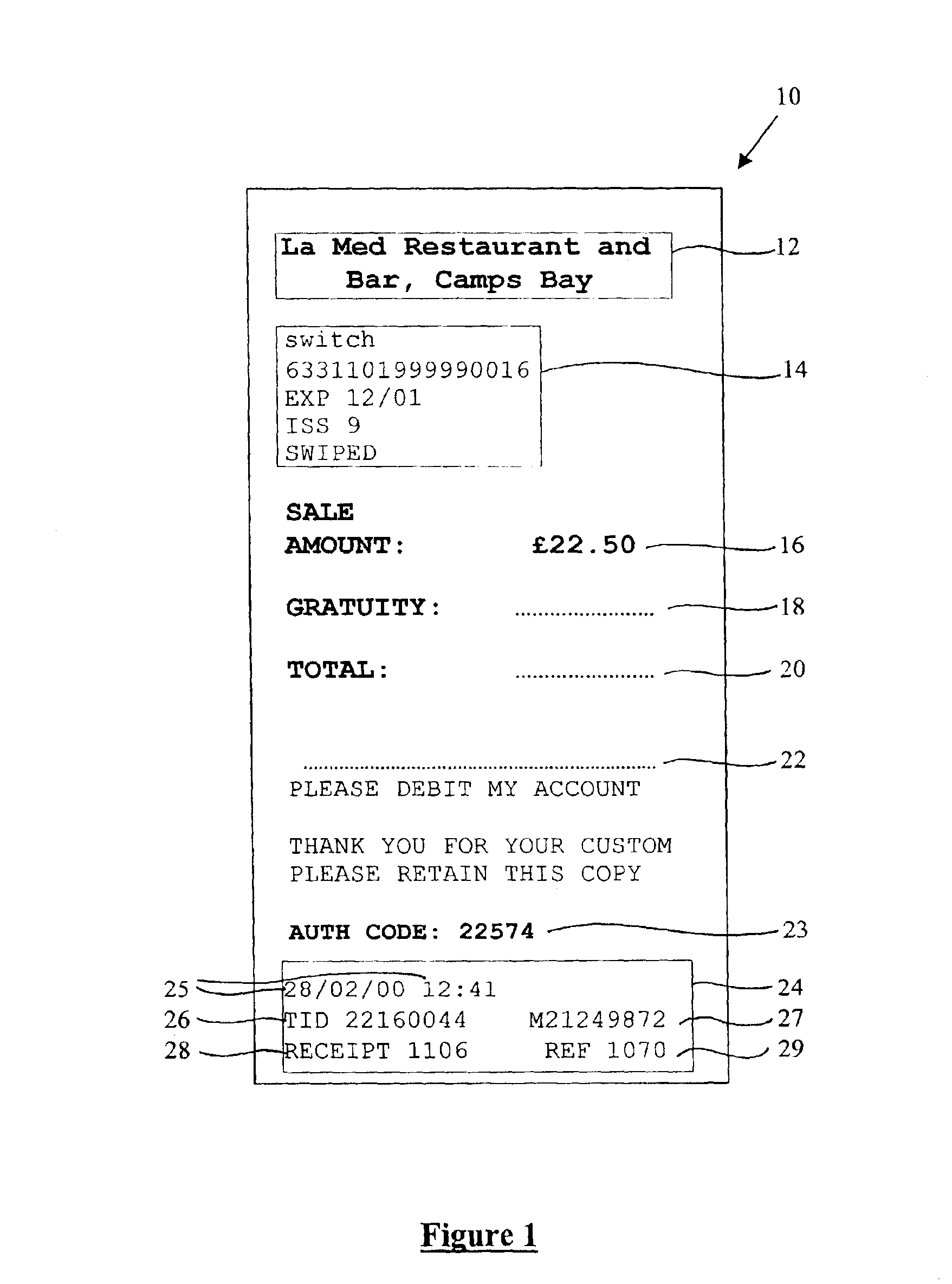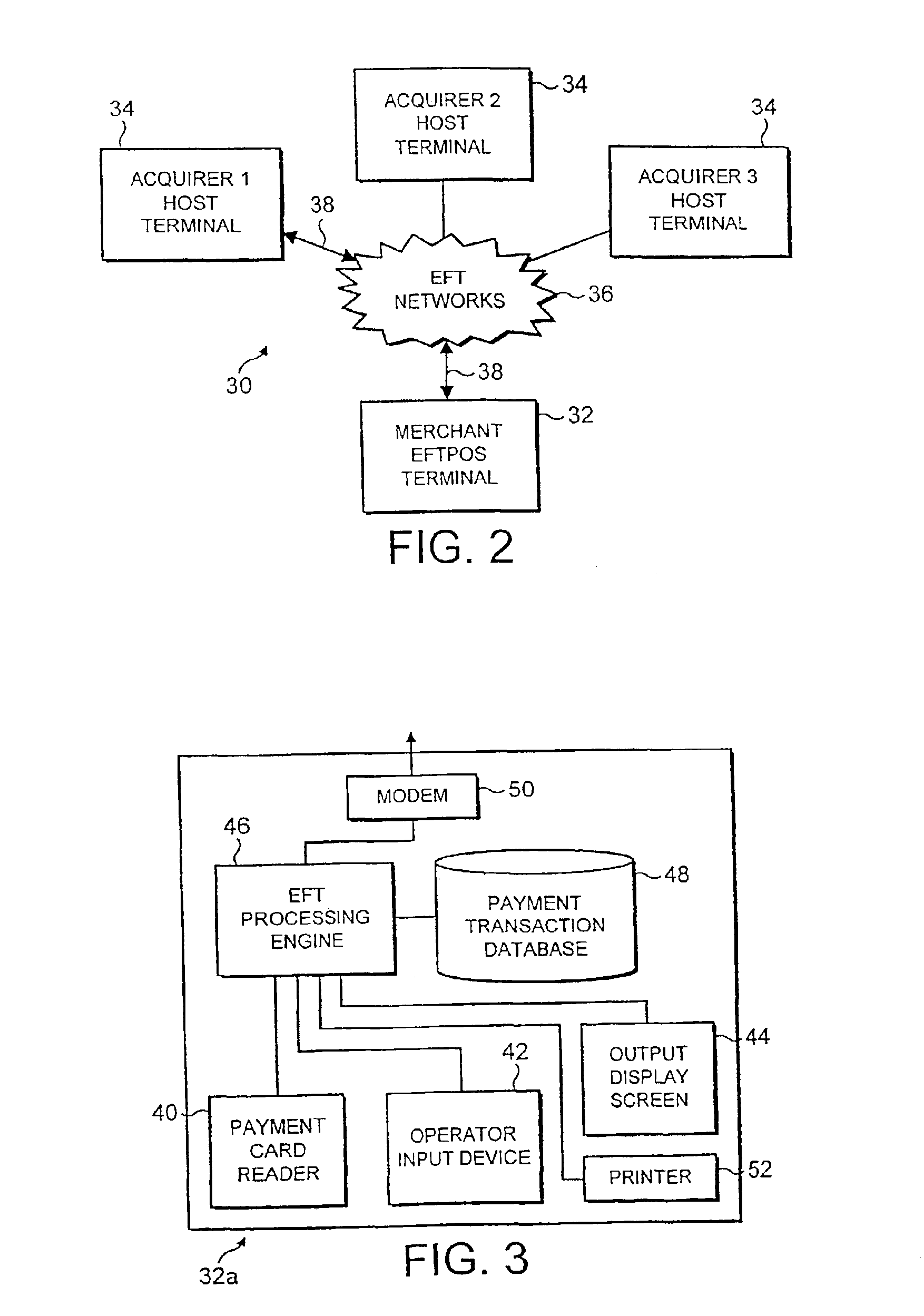System and method for the security of payment transactions
a payment transaction and security technology, applied in the field of system and method for the security of payment transactions, can solve the problems of cardholders unwittingly paying for any unauthorised transaction, fraudulent transactions associated with genuine purchases often evade detection, and the security of eft systems and their robustness is seriously concerned, so as to improve security, save costs, and optimise the operation of authorising payment transactions
- Summary
- Abstract
- Description
- Claims
- Application Information
AI Technical Summary
Benefits of technology
Problems solved by technology
Method used
Image
Examples
second embodiment
With reference to FIG. 2, an authorisation system 30 for implementing a first and the present invention will now be described. The authorisation system 30 facilitates communication between the parties involved in an electronic payment transaction, namely a merchant, a payment cardholder and an acquirer who will capture the electronic data concerning the transaction on behalf of the payment card issuer. It enables the merchant to check whether the acquirer will settle the cardholder's bill in due course, particularly when the cardholder also wishes to make a gratuity payment using their payment card. The authorisation system 30 shown in FIG. 2 is comprised of a merchant EFTPOS terminal 32 and a plurality of acquirer host terminals 34 (of which only three are shown) which are connected by a central communications hub, namely an EFT network 36 such as a public telephone network. In what follows, the different and specific ways in which the authorisation system 30 is used to implement t...
first embodiment
An EFTPOS terminal 32a of the first embodiment is shown in more detail in FIG. 3 and comprises the same elements as those described for the prior art, namely a payment card reader 40, an operator input device 42, an output display screen 44, an EFT processing engine 46, a payment transaction database 48, a modem 50 and a printer 52. However, the EFTPOS terminal 32a is configured to operate in a different manner from that taught by the prior art as is described below.
The payment card reader 40 is arranged to quickly extract payment card details. Two types of payment card are currently available, the first being a magnetic strip variety where information has been magnetically encoded onto the card and the second being so-called “smart cards” which contain integrated circuitry giving the card limited processing capabilities. Magnetic cards are usually “swiped” through a payment card reader 40, whilst smart cards are inserted into a reader 40 which accesses the information held on their...
PUM
 Login to View More
Login to View More Abstract
Description
Claims
Application Information
 Login to View More
Login to View More - R&D
- Intellectual Property
- Life Sciences
- Materials
- Tech Scout
- Unparalleled Data Quality
- Higher Quality Content
- 60% Fewer Hallucinations
Browse by: Latest US Patents, China's latest patents, Technical Efficacy Thesaurus, Application Domain, Technology Topic, Popular Technical Reports.
© 2025 PatSnap. All rights reserved.Legal|Privacy policy|Modern Slavery Act Transparency Statement|Sitemap|About US| Contact US: help@patsnap.com



